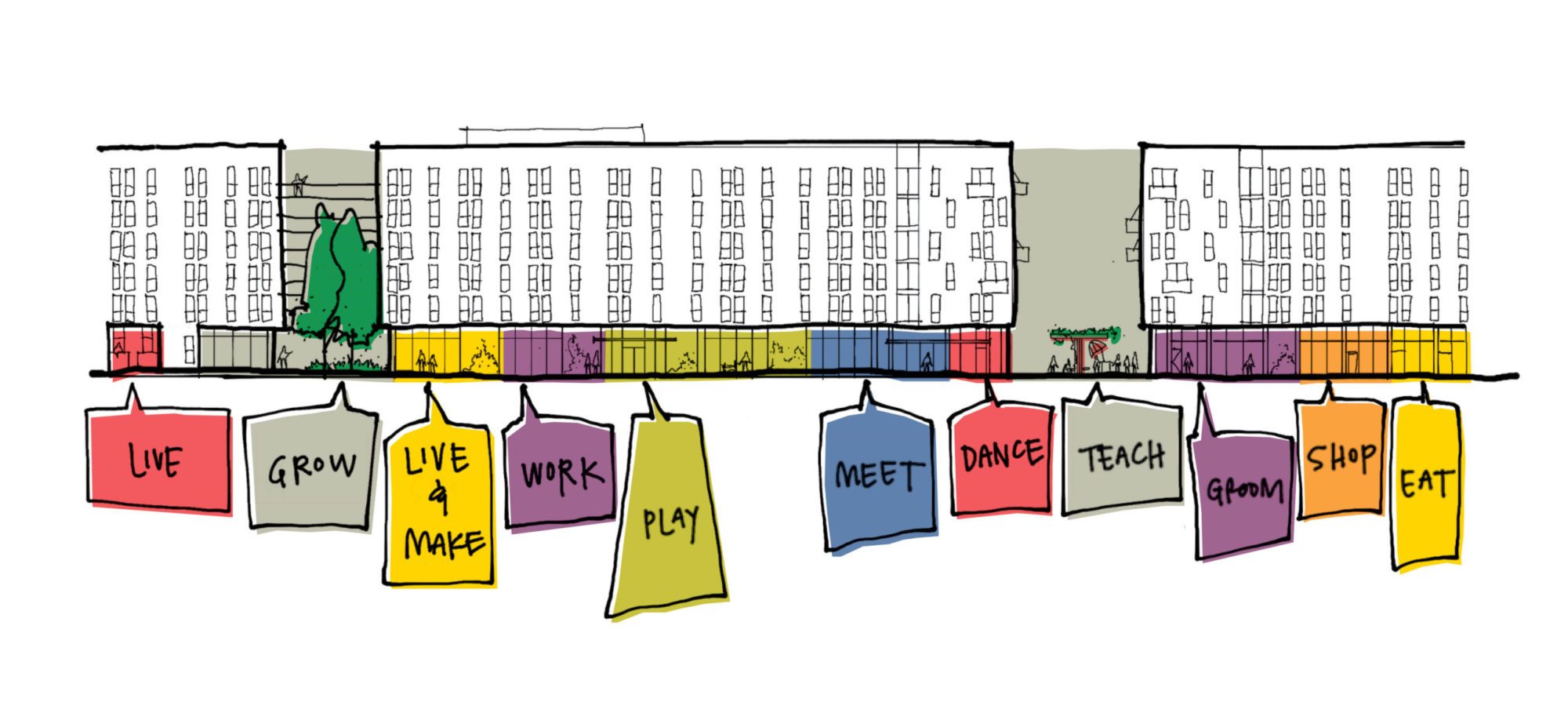
855 Brannan is a large community filling a city block in San Francisco, yet the ground floor is alive with human-scaled activity: Shops, homes, lofts, restaurants, offices, plazas, and entries offer interest and engagement every step of the way. (Source: David Baker Architects)
Introduction: Human Perception and the Urban Environment
Humans have evolved to navigate and interpret their surroundings through a combination of sensory inputs, with vision playing a pivotal role. In natural settings, we are attuned to edges—transitional zones between different environments—such as forest clearings or riverbanks. These edges often signify safety, resources, or social opportunities.
In urban contexts, this innate preference translates to a focus on the "edges" where buildings meet the street. These interfaces are where public and private realms converge, offering opportunities for interaction, commerce, and community engagement.
What Does "Activating the Edges" Mean?
"Activating the edges" refers to designing the ground-level interfaces of buildings and streets to encourage interaction, engagement, and activity. Rather than presenting blank walls or inaccessible facades, active edges feature elements like storefronts, cafes, seating areas, and transparent windows that invite passersby to engage with the space. According to ArchDaily, prioritizing interactive uses such as community spaces, courtyards, entries, or seating in the prime space where the building meets the street edge ensures lively interaction between the building and the public realm. This approach prevents dormant spots where dynamic uses should prevail, ensuring lively interaction between buildings and the public realm.
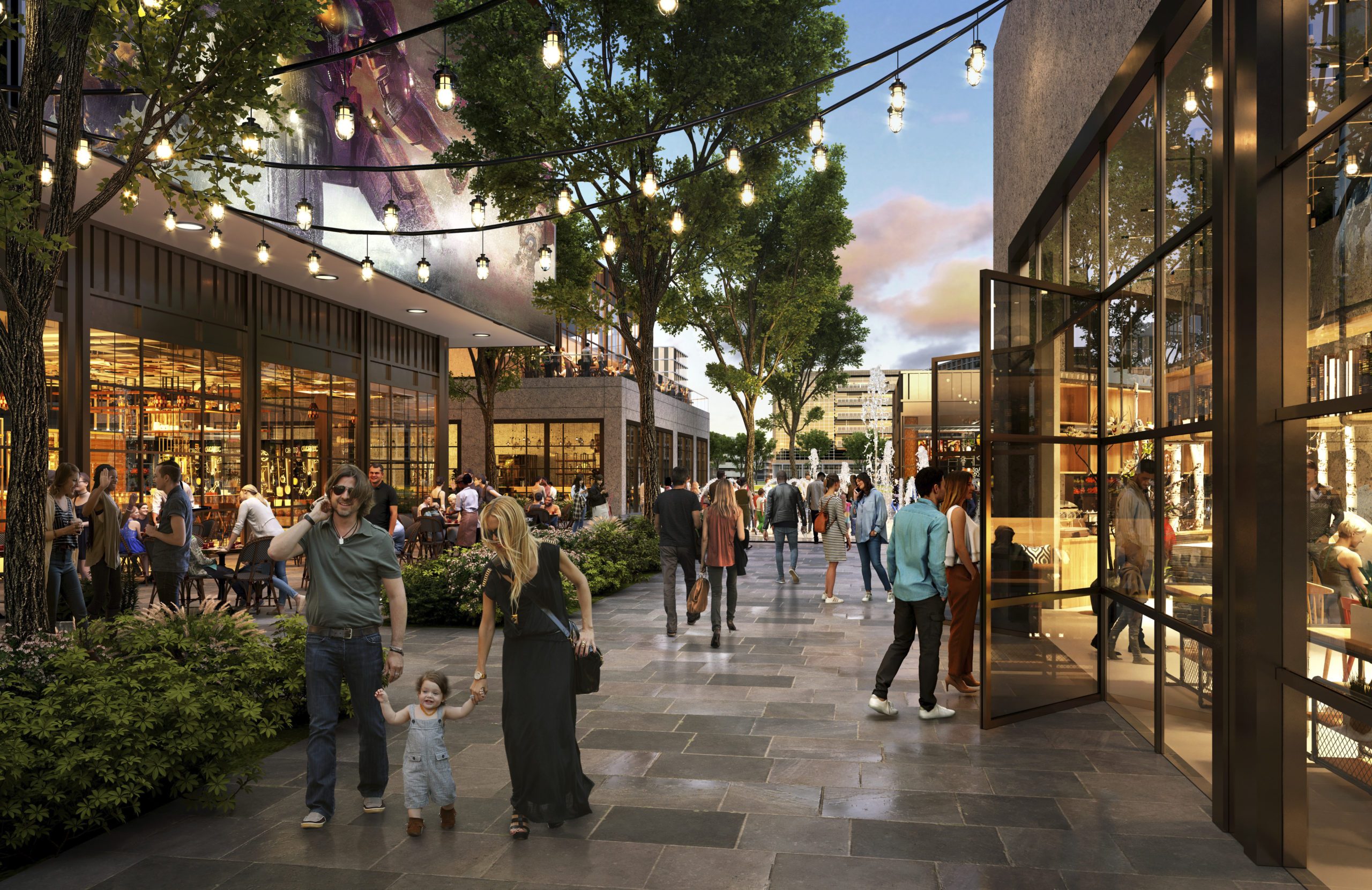
The Point - Draper, Utah, US (Source: SOM.com)
Benefits of Activating Street Edges
Enhanced Walkability: Active edges contribute to a more engaging pedestrian experience, encouraging walking and reducing reliance on vehicles.
Economic Vitality: Vibrant street edges can boost local economies by attracting foot traffic to businesses and increasing property values.
Social Cohesion: Spaces that encourage lingering and interaction foster community bonds and a sense of belonging.
Safety: Active edges increase "eyes on the street," deterring crime and enhancing the perception of safety.

300 Ivy is a mixed-use development of urban homes and shops - San Francisco, USA (Source: dbarchitects.com - Bruce Damonte)
Design Strategies for Activating Edges
Transparent Facades: Use large windows and glass doors to create visual connections between indoor and outdoor spaces.
Mixed-Use Development: Incorporate a variety of functions—retail, residential, cultural—at street level to ensure continuous activity.
Street Furniture and Landscaping: Install benches, planters, and lighting to make spaces inviting and comfortable.
Interactive Elements: Include features like public art, interactive displays, or performance spaces to engage pedestrians.
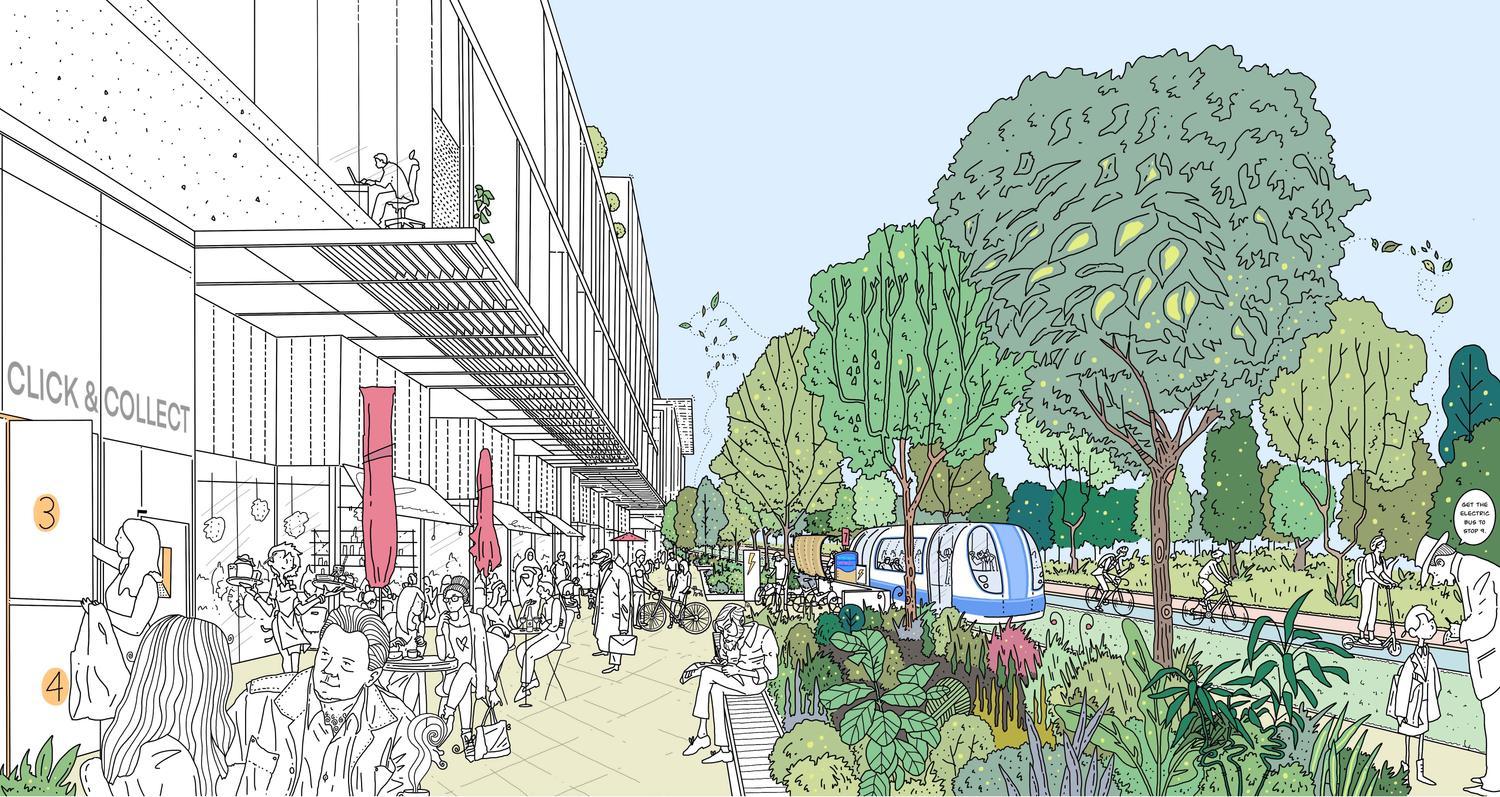
Mayflower Quarter - Southampton (Source:ar-urbanism.com)
Walkable Urbanism: Definition and Implementation
Walkable urbanism emphasizes designing neighborhoods where daily needs are within a 15-minute walk, promoting health, sustainability, and community interaction. Key characteristics include:
Human-Scale Design: Buildings and streets are proportioned to be comfortable and accessible for pedestrians.
Connectivity: A well-connected street network allows for easy navigation and access to amenities.
Mixed-Use Development: Combining residential, commercial, and recreational spaces encourages diverse activities.
As noted by Strong Towns, walkable places are built to human scale, with compact development patterns and streets designed for human activity rather than high-speed traffic. Strong Towns
Measuring a Building's Success in Its Neighborhood
Evaluating how well a building integrates with its surroundings involves assessing:
Ambient Comfort: Thermal comfort, noise levels, and air quality.
Amenities: Availability of services and facilities that meet residents' needs.
Built Form: The building's scale, massing, and architectural character relative to its context.
Mobility: Accessibility to and from the building via various modes of transportation.
Safety: Perceptions and statistics related to crime and traffic safety.
Gensler's framework for measuring urban experience, for example, encompasses these categories to evaluate the success of urban areas.
Impact of Ground Floor Height on Human Experience
The height of a building's ground floor significantly influences its interaction with the street. Higher ground floors (450-550 cm) accommodate retail spaces, lobbies, and other active uses, enhancing the building's presence and inviting pedestrian engagement. SPUR notes that a higher ground floor allows adequate space for residential stoops, mechanically stacked parking, or ground-floor lofts, contributing to a more dynamic street interface.
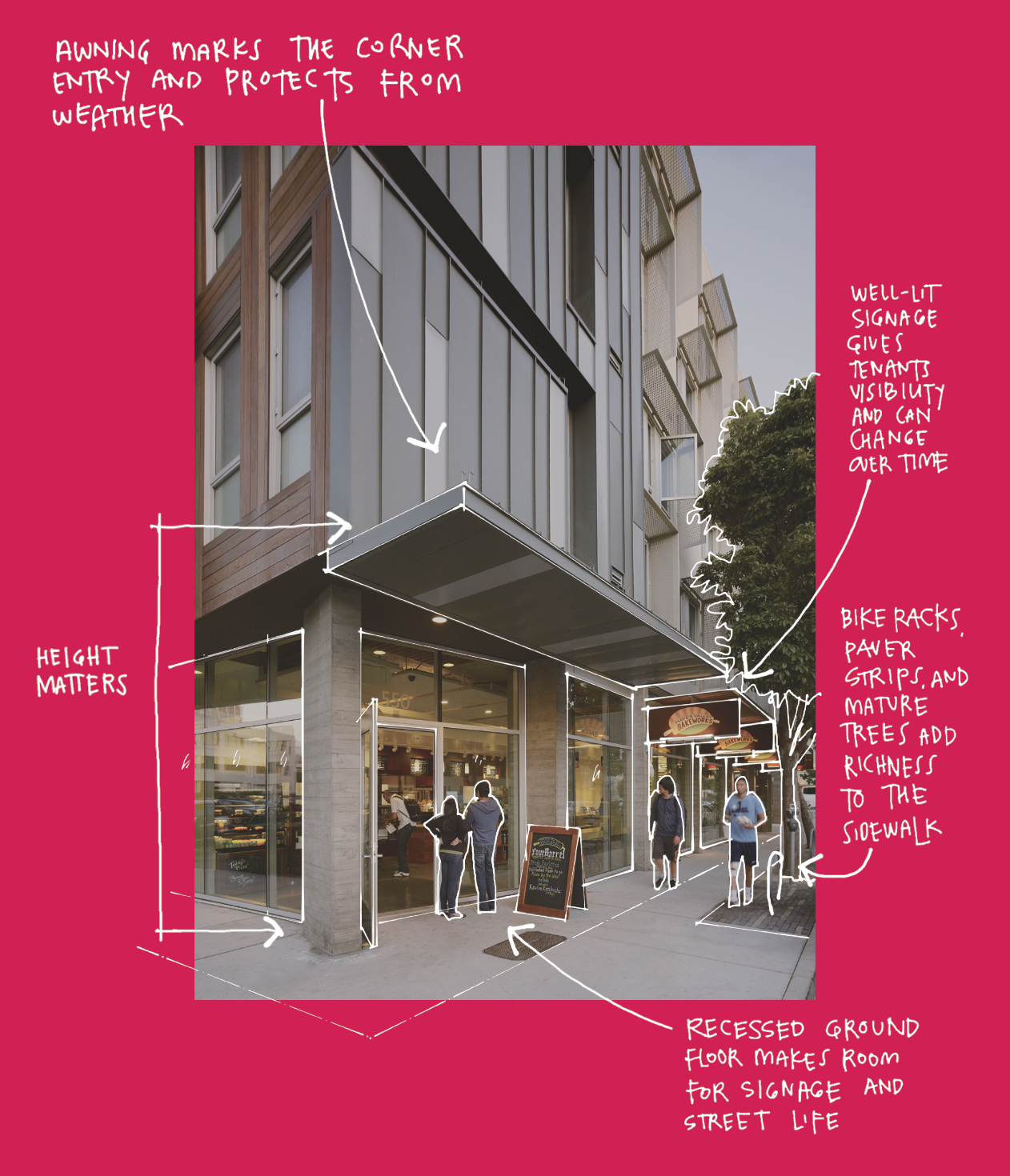
(Source: dbarchitects.com - Bruce Damonte)
Creating Inviting and Hospitable Streetscapes
To design welcoming streetscapes:
Ensure Continuity: Maintain a consistent building line with minimal setbacks to define the street edge.
Incorporate Active Uses: Place cafes, shops, and community spaces at street level to encourage activity.
Provide Shelter and Shade: Use canopies, trees, and awnings to protect pedestrians from the elements.
Enhance Lighting: Install adequate lighting to ensure safety and extend the usability of spaces into the evening.
Linking Living and Working Spaces to the Wider World
Designing seamless transitions between private and public realms involves:
Semi-Public Spaces: Incorporate porches, stoops, and terraces that serve as intermediaries between homes and the street.
Visual Connectivity: Use transparent materials and open designs to connect indoor activities with outdoor observers.
Flexible Boundaries: Employ landscaping and low walls to delineate spaces without creating barriers.
Offering Visual Engagement and Interest
To contribute positively to the streetscape:
Articulate Facades: Use varied materials, colors, and textures to create visual interest.
Display Activity: Design spaces where indoor activities are visible from the street, showcasing the building's function.
Integrate Art: Incorporate murals, sculptures, and installations that reflect the community's identity.
Notable Examples of Activated Street Edges
1. Exhibition Road, London, UK
Transformed into a shared space in 2012, Exhibition Road removed traditional curbs and distinctions between pedestrian and vehicular areas. This redesign encourages people to wander across the street, fostering a more interactive and pedestrian-friendly environment.
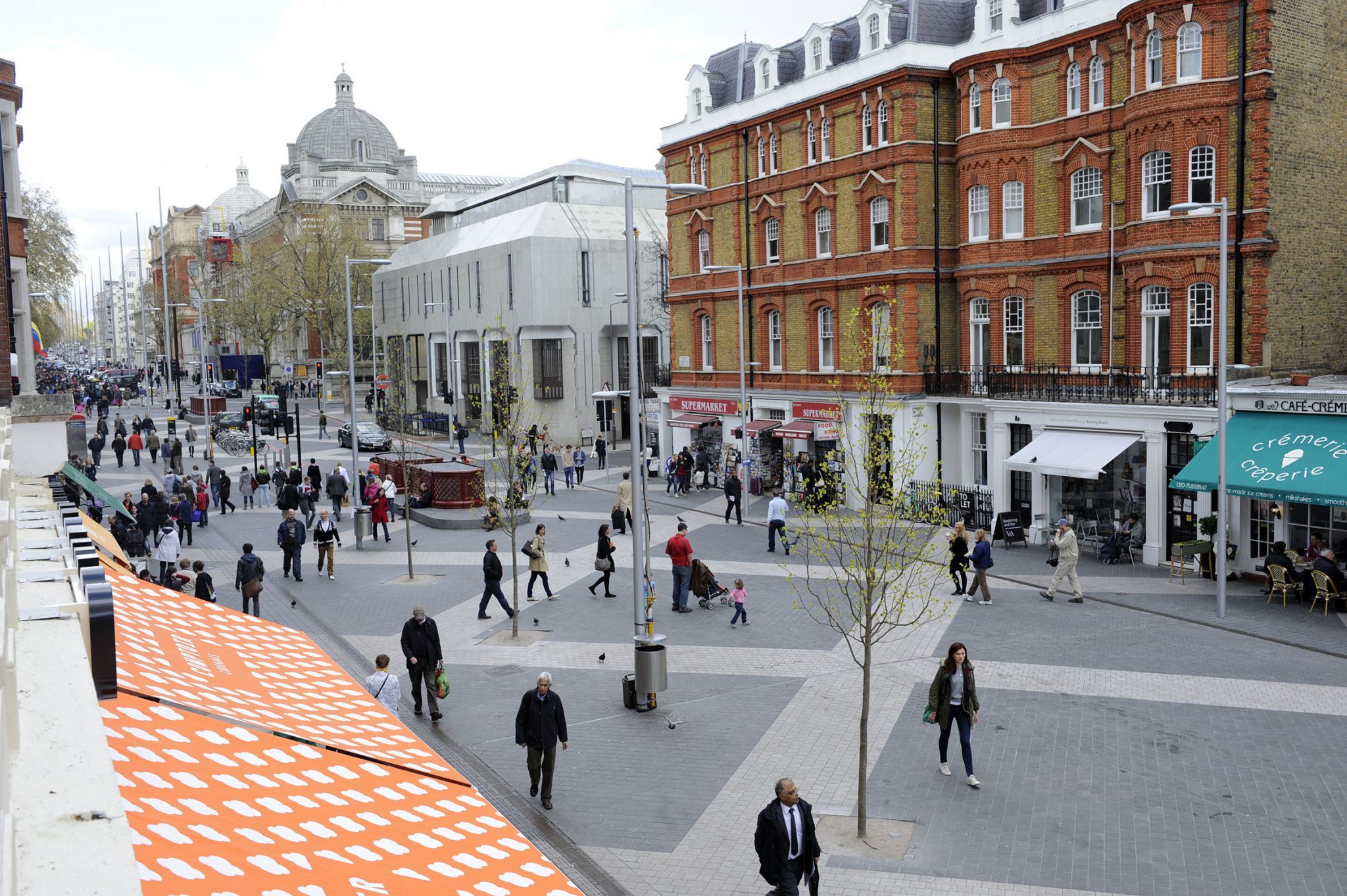
Exibition Road - London, UK (Source:marstonholdings/projectcentre.co.uk)
2. New Road, Brighton, UK
Adjacent to the Royal Pavilion, New Road was redesigned into a fully shared space with no delineation between the carriageway and footway. The subtle changes in materials and placement of street furniture guide movement, resulting in a 93% reduction in motor vehicle trips and significant increases in pedestrian and cyclist usage.
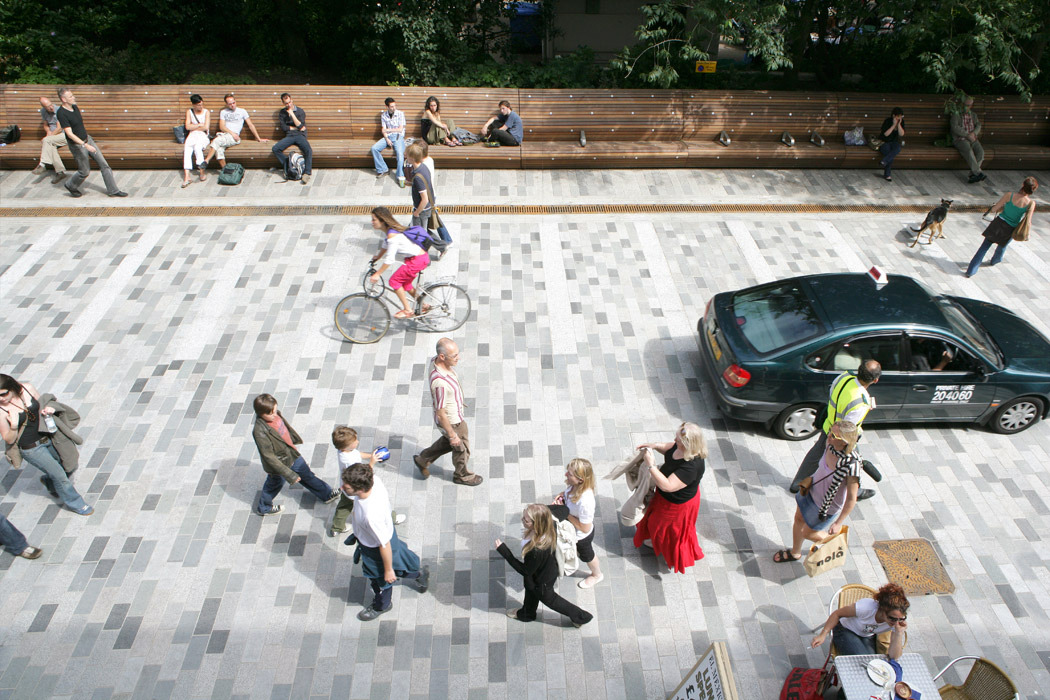
New Road - Brighton, UK. New Road incorporates interests of different user groups and encourages bicycling, sitting, standing and walking activities based on people-focused public space programming making it sustainable in both a social and environmental way.(Source: Gehlpeople.com)
3. Bell Street Park, Seattle, USA
Opened in 2014, Bell Street Park is a 1.33-acre woonerf—a shared space for pedestrians and vehicles without curbs. Situated in a neighborhood previously plagued by low-level crime, the park's design aimed to reduce crime rates and enhance community engagement.
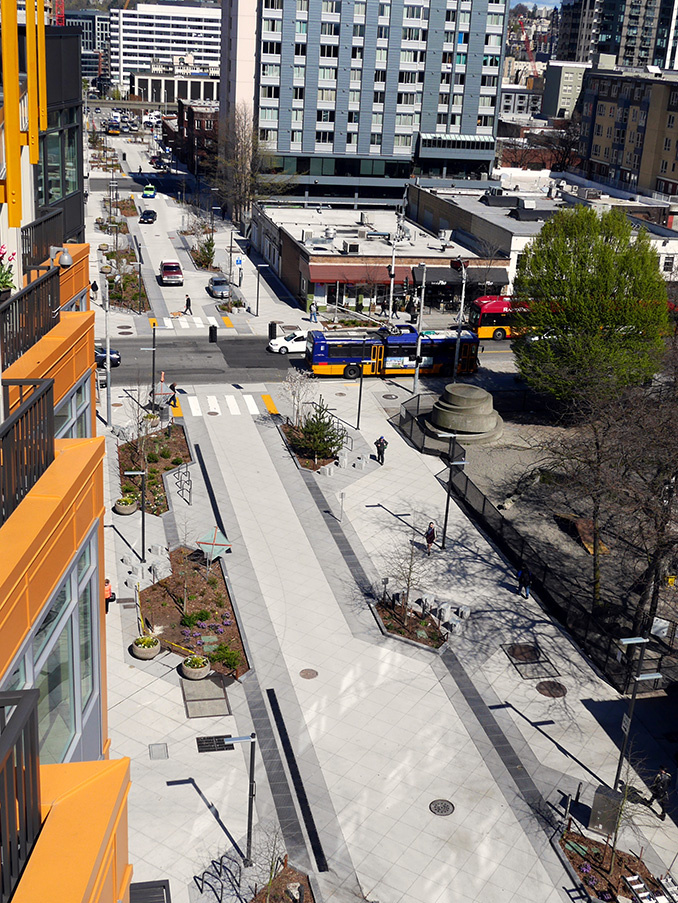
Bell Street Park a hybrid of park activities and street functions - Seattle, WA, USA (Source: migcom.com | SvR)
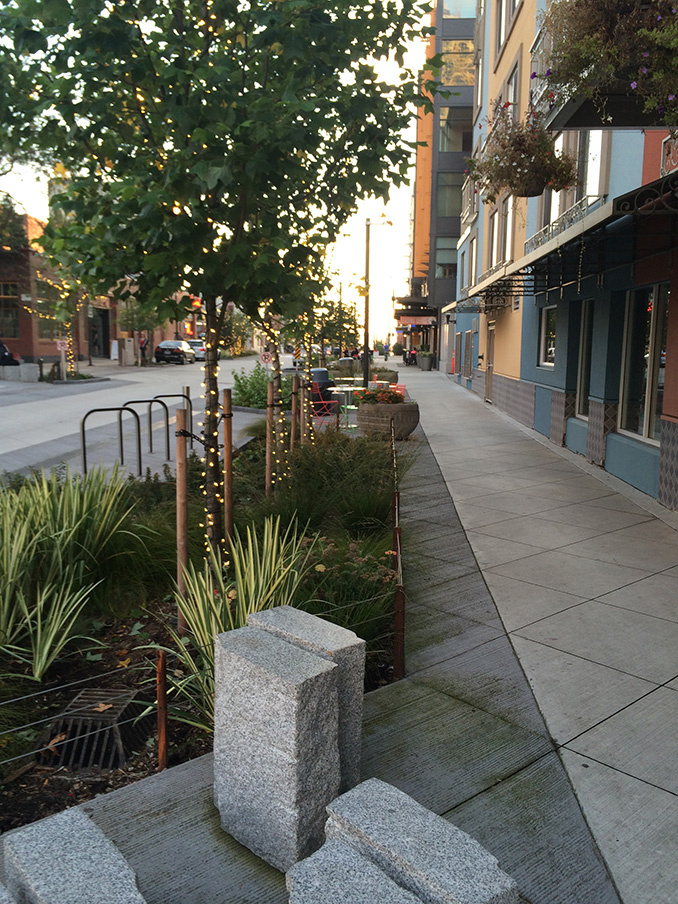
Bell Street Park: It gives an outdoor living room to residents of Seattle’s densest neighborhood while allowing automobile, bus, bicycle, and emergency vehicle access.
4. Poynton Town Centre, Cheshire, UK
Poynton's town center underwent a significant transformation by removing traditional traffic signals and markings, creating a shared space that encourages pedestrian movement and slows down vehicular traffic. This redesign improved safety and revitalized the retail and social center of the town .
Activating street edges is a multifaceted approach that enhances urban life by fostering interaction, safety, and economic vitality. By learning from successful examples and employing thoughtful design strategies, cities can create more inviting and hospitable streetscapes that connect living and working spaces to the wider world.
By thoughtfully activating street edges, we can transform our urban environments into vibrant, inclusive, and engaging spaces that reflect and serve the communities they encompass.
Front picture: Bourke and Bowden: The focus here is creating experiences that enhances the wellbeing and productivity of its occupants, stimulates the senses, promotes creativity and enhances human interaction. - Sydney, Australia. (Source: timeplace.com.au & John Wardle Architects)









